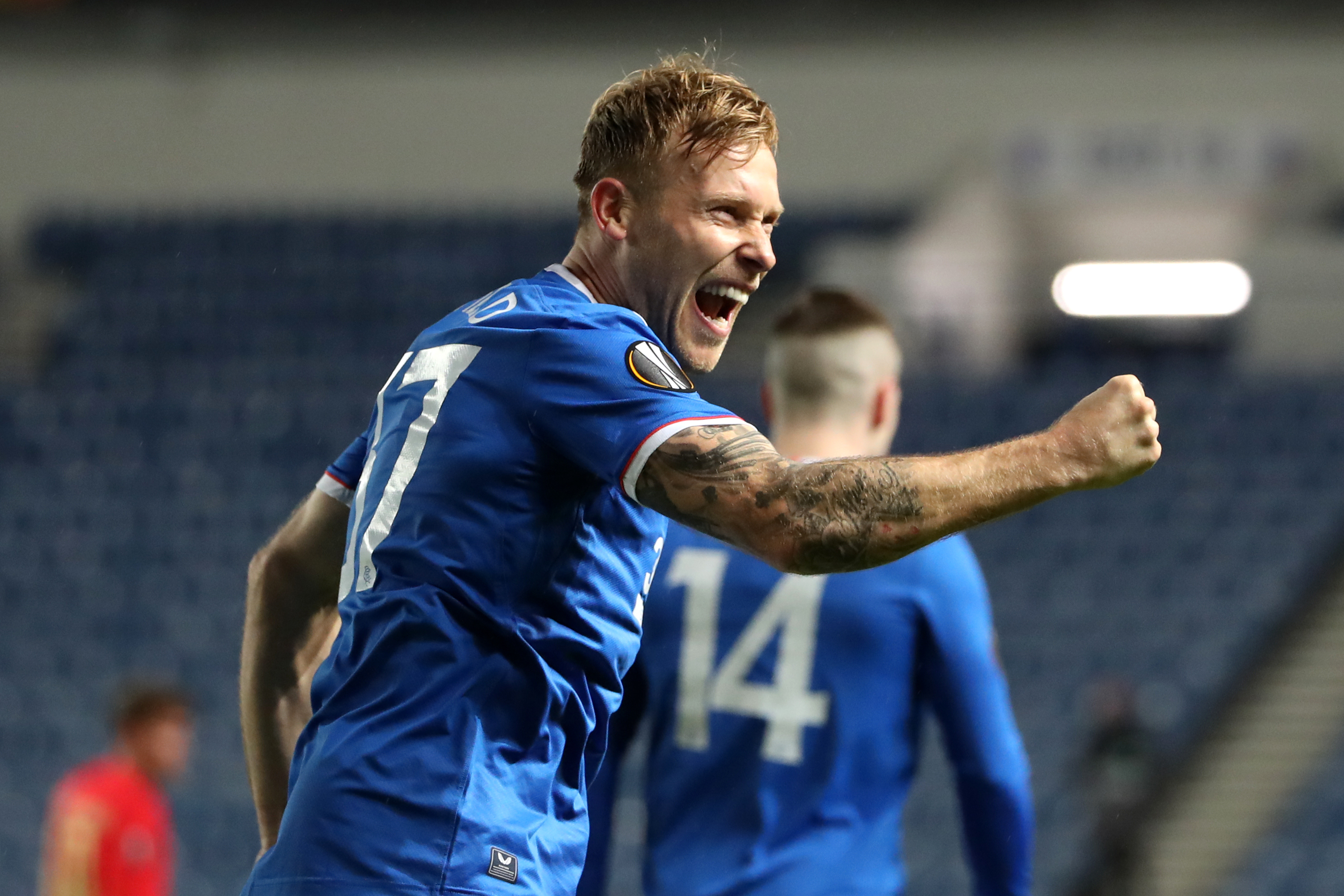The evolution of Cesc Fabregas
FourFourTwo's Jonathan Fadugba takes a look at the evolution of Cesc Fabregas' game and how Tata Martino has managed to get the best from the former Arsenal star...

To see Cesc Fabregas at the PUMA evoPOWER boot launch event in Barcelona, you wouldn’t think you were looking at one of the best players at one of the biggest clubs in Europe, in his home city. Neatly-coiffed and looking sharp in PUMA’s all black training gear and shiny new boots, Fabregas strolls around the indoor hall almost incognito.
The hall has been converted into a mini-football pitch with a futuristic feel to it, state-of-the-art graphics and sensors projected onto the back wall with a mini-stand set up for the audience. While preparations for the main event go on, Fabregas weaves his way around this temporary arena in understated fashion.
The 26-year-old is casual and retiring, fairly unassuming all things considered, and far less conspicuous than the more attention-grabbing personalities Mario Balotelli and Thierry Henry.
He is notably shy around Henry, a deferent nod to the old Arsenal dressing room dynamics, perhaps (Fabregas once admitted to feeling ‘intimidated’ by Henry’s presence). He laughs and jokes with Balotelli and Marco Reus while taking some frankly awful penalties in the evoPOWER challenge undertaken by the three, won by Balotelli.
Observing this, you wouldn’t think you were looking at one of Barcelona’s main men. But under new coach Tata Martino, Fabregas is having his best season at Camp Nou and has emerged as one of the new manager’s key players. Playing in a more liberated role than the one under Pep Guardiola and Tito Vilanova, Fabregas is thriving under Martino’s guidance and has helped redevelop the Spanish champions’ game.
Fabregas in form
The 26-year-old currently leads La Liga’s assist table with 10 from 20 appearances – one less than he managed in 30 starts last season and as many as in the entirety of his first season at Camp Nou – and his seven league goals (12 in all competitions) have been a contributing factor to Barcelona currently topping the table. Furthermore, Fabregas’ all-round dynamism and creativity have helped Martino’s team remain in pole position even in the absence of Lionel Messi, who has been injured for much of the season.
Get FourFourTwo Newsletter
The best features, fun and footballing quizzes, straight to your inbox every week.
The evolution of Cesc Fabregas is an interesting one. It also says much about the importance good coaches and attentive managers play in helping shape footballers’ careers.
The Spaniard had half of north London swooning over a distinguished eight-year spell. He made his debut at 16, scored 57 goals in 303 appearances, became club captain and talisman and developed into one of the Premier League era’s great playmakers, creating more chances between 2006 and 2011 than any player in Europe’s top five leagues.
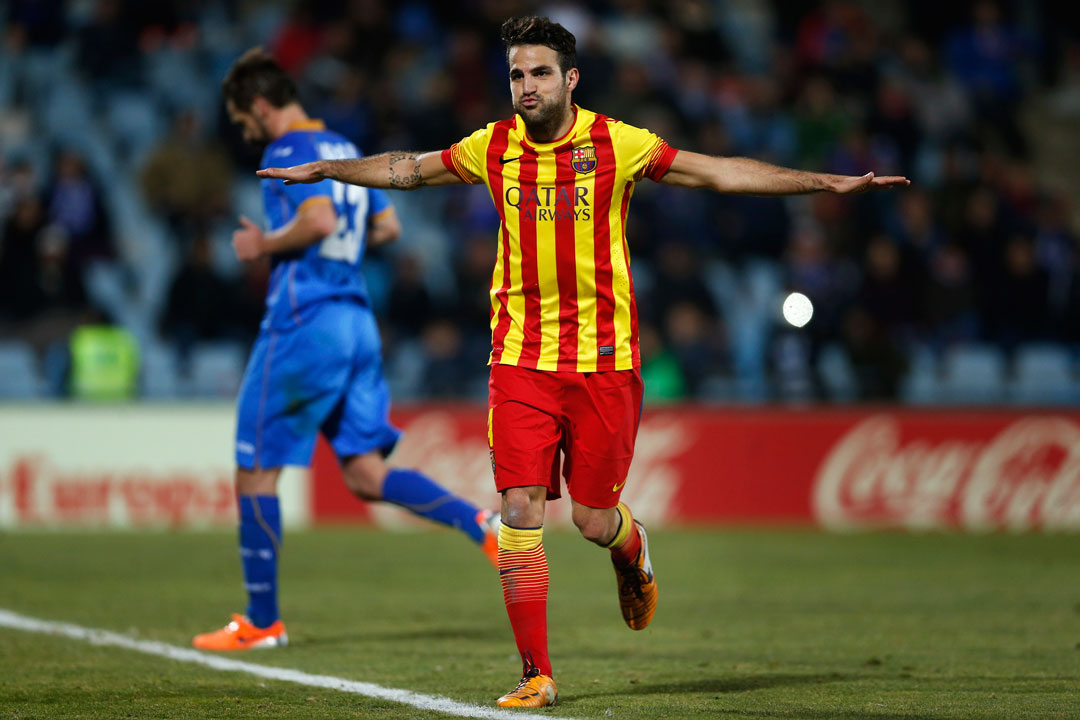
But since rejoining his boyhood club in a £35 million deal in 2011, while Fabregas’ numbers have been respectable enough, he hasn’t quite regained the effortless swagger and adulation of his Arsenal years. An inability to find his true place in Pep Guardiola’s team led to question marks as to whether there was any room for the prodigal son on his return home, and Barca’s supporters were sometimes left underwhelmed.
At the height of his frustrations early last season, Fabregas expressed discontent at the bit-part role he played early in the campaign under Tito Vilanova, commenting that he ‘came to Barcelona to compete, to learn and enjoy, not to sit racking my brains.’
Fabregas’ recent resurgence, however, has put all that to bed, and by his own admission the former Arsenal superstar owes his form to Barca’s new Argentinian coach Gerardo Martino. “This coach [Martino] lets me play the way that suits my qualities and I'm very comfortable, very happy,” Fabregas said late last year.
“On the first day – well, not the first day, but maybe the third or fourth, early on – he called me over and told me: "I want you to be the player you were at Arsenal." And I thought: "Wow!", because I'd always felt so good at Arsenal, so important. I'm not the No.10 exactly because things aren't so clearly defined positionally as with Pep [Guardiola] and Tito [Vilanova], who were very focused on that. When we attack, Tata likes things to be a little more anarchic – just a little – which means that with the ball you can move away from a set position without any problems.”
So what has changed between this season at Barcelona and others? How has Martino got the best from Cesc?
How Tata got Cesc's groove back
Theoretically, the difference has been simple. To get Fabregas somewhere closer to the level he reached at Arsenal, Martino has rejigged his team shape and asked Fabregas to take his game back to the old school days under Wenger, with greater freedom to involve himself in all aspects of play.
Though Fabregas began his Arsenal career in the defensive midfield role he cultivated in the junior teams as a kid at Barcelona, it was never his true calling. “Cesc is a guy who likes to be at the heart of things,” Wenger once said of his star midfielder’s box-to-box qualities. “He wants to get the ball out from the back and play.”
The Spaniard broke into Arsenal’s first team in 2004, but Wenger soon realised that Fabregas and Patrick Vieira didn’t work together as a midfield pairing, and so chose to build his team around the kid with the mullet.
Fabregas’ subtlety, technique, vision and natural instinct for when to play the killer pass made him an excellent playmaker for the Gunners, but he was also very much a hustle and bustle type – moving from box-to-box with license to pretty much do as he pleased. “At Arsenal I went wherever I wanted,” Fabregas told FourFourTwo in January 2012.
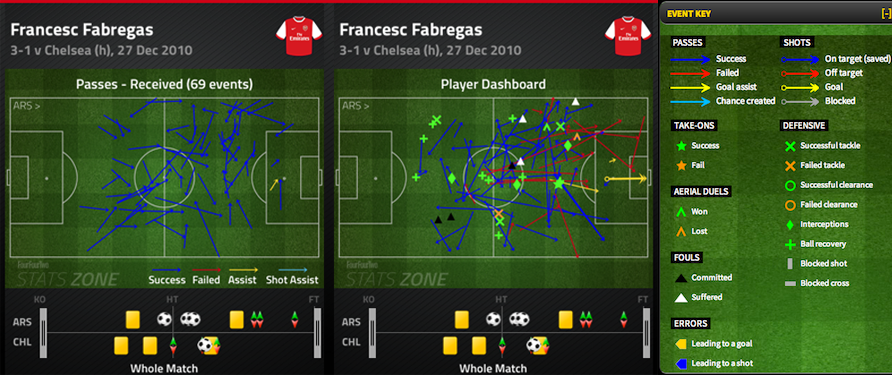
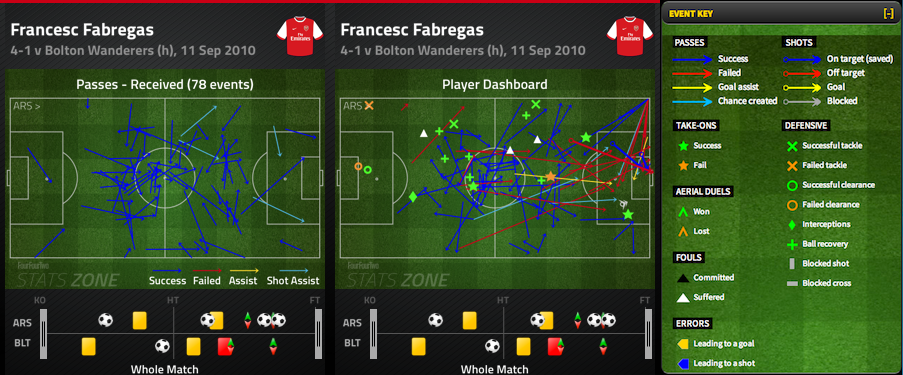
An adventurous streak has always resided within Cesc – it’s this same daring side that prompted him to up sticks and leave his hometown at 16 to move to London in the first place. At times it has proved costly, most notably when he tried backheeling his way out of a tricky defensive situation in a Champions League knockout game at Camp Nou against Barcelona, in his final season as an Arsenal player, a mistake ruthlessly capitalised on by Andres Iniesta, Lionel Messi and the rest of his future team-mates.
Debates about how this freedom affected the overall balance and success of the Arsenal team as a whole are for another day. But it certainly got the best out of Fabregas.
Under Pep Guardiola, however, things changed. “The game we play here is more positional, more tactical,” Fabregas told FFT in his first season at Barca. “You have to be in sync with the team.”
Whether this tactically conscious style suited Fabregas’ game or not, he used his obvious game intelligence to adapt. He was still a productive player, contributing 22 goals and 22 assists over the past two seasons in league and Champions League. But, given the greater tactical obligations imposed by Pep, was he a happy player?
As much as he idolised and strived to impress Guardiola, recent comments suggest not quite as happy as under Martino. Performances, too, add weight to this theory. Martino has allowed Cesc greater freedom, while also asking him to press higher to defend when Barca lose possession.
“Tata doesn’t ask us to do anything that we haven’t done before. He’s asking us to get back some feelings that we had when Pep was here, which is to recover the ball high up the pitch and always when he have the opportunity to attack, to attack.”
The shackles are off.
Fabregas can roam free, dropping deeper to involve himself in play and getting further forward when Barca have possession to both create and score goals. His runs and where he receives the ball are reminiscent of the old Arsenal days, with greater variety in the areas he collects the ball and more chance to be ‘anarchic’.
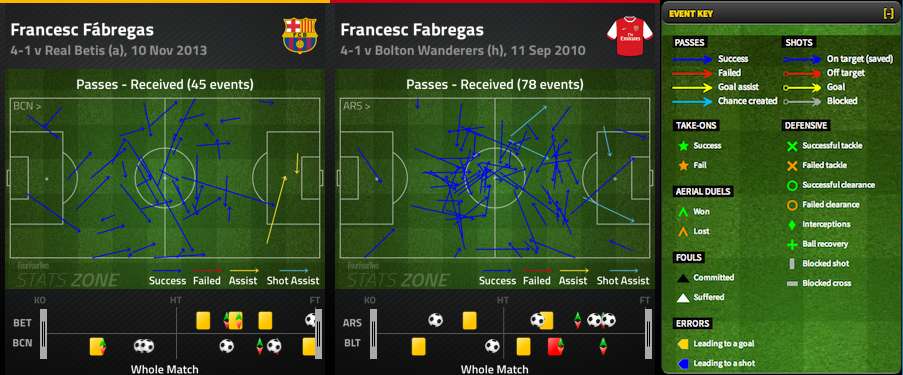
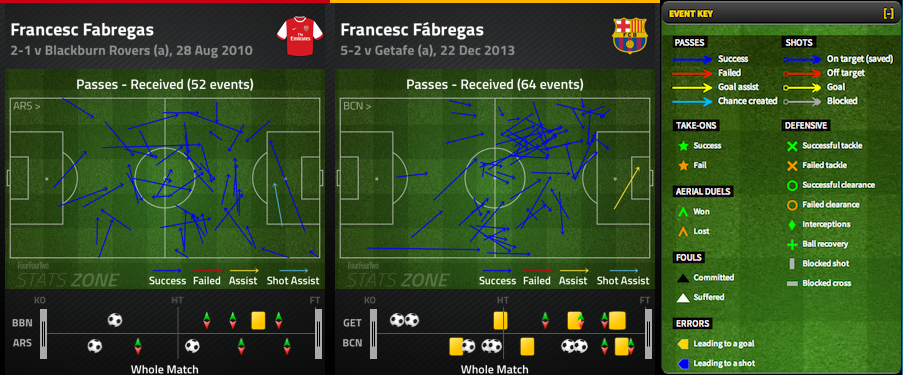
The result? More goals, more assists, a key passes per game ratio somewhat closer to (but still not as good) as the numbers he managed in his latter days at Arsenal. And, above all, a happier Cesc.
“I feel very important and I think my importance in the team is growing greater and greater,” he beamed at the PUMA boot launch. “I’m getting the consistency with this coach that I needed: out of the last 15 games I played 14. Starting games makes you feel good as a player and I feel my performances are growing to help the team.”
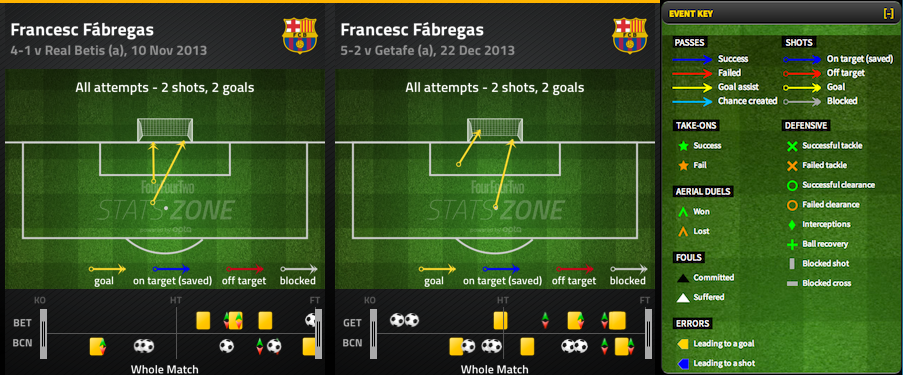
What’s more, a further upside to Martino’s clever handling of Fabregas is that he’s also getting the best out of those around him. Cesc’s stealth play as a false 9 has also benefitted Pedro and Alexis Sanchez’s game.
Operating in that false 9 role as he’s done so successfully for Spain, Fabregas drops deeper to link play with the midfielders and full-backs Jordi Alba and Dani Alves, who play off the 26-year-old and charge forward like wingers to receive the return pass.
Fabregas’ stealth runs and neat flicks and through balls in turn offer a jump-off point for wide men Pedro, Sanchez or Neymar, who make use of the space vacated by Fabregas in central attacking positions to cut inside and look for a route to goal.
With 12 each, both Pedro and Alexis already have more La Liga goals this season than they managed in the whole of 2012/13, while Neymar's six goals put him on course to top David Villa’s 10 from 28 appearances in the blaugrana of Barca last season. Six of Fabregas’ 10 assists have been for these three players.
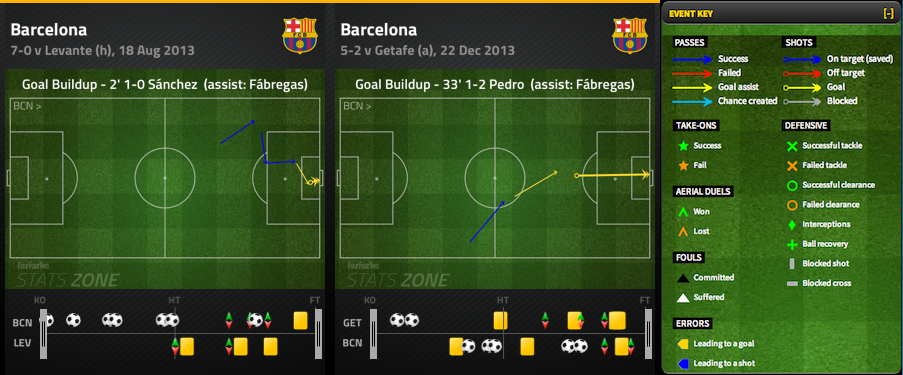
He’s always been a brilliant player, ever since dipping his toes in the waters of professional football against the likes of Rotherham and Wolves as a 16-year-old. What Tata Martino has done to great success so far this season is find a way to get the best out of both the player and the team.
Click here for more information about the PUMA evoPOWER boots.
Can't see the video? Click here to watch in another window
